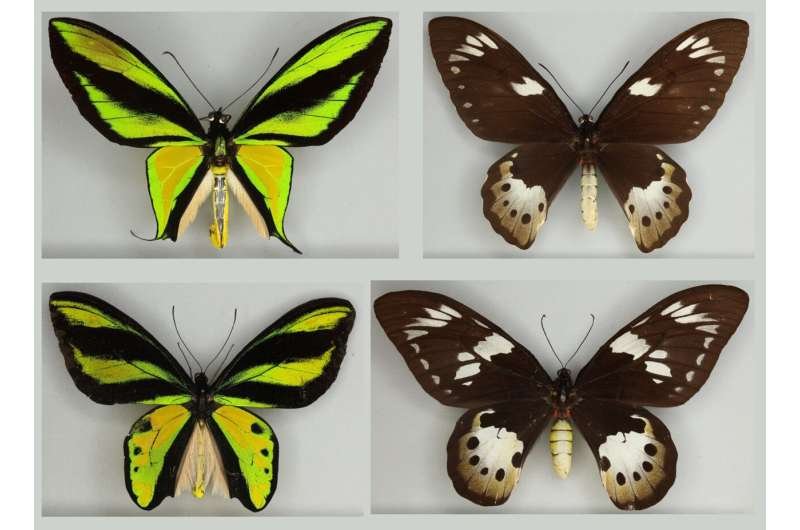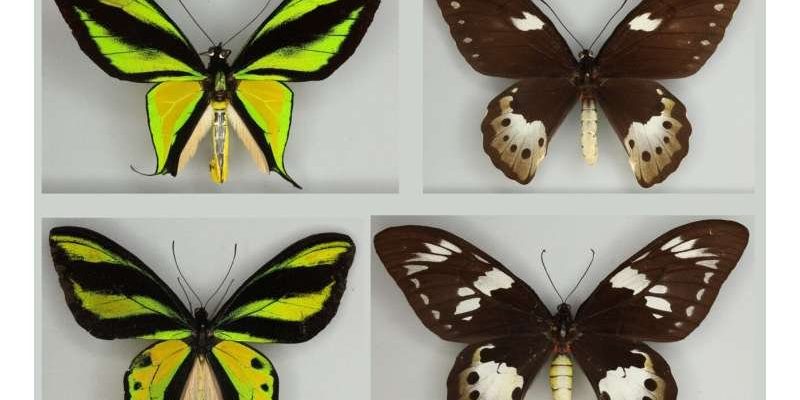
Let’s dive into the world of butterflies and explore their evolution. To think of it like a thrilling novel, each chapter uncovers the intriguing journey of these insects—from their prehistoric ancestors to the vibrant creatures we admire today. So, grab your favorite beverage, and let’s take a leisurely stroll through time!
Prehistoric Origins: The Dawn of Butterflies
The story of butterflies begins long before they graced our gardens. They evolved from a group of insects called *Lepidoptera*, which includes moths as well. Research suggests they first appeared around 200 million years ago, during the Triassic period. This was a time when dinosaurs roamed the Earth, and the world looked very different.
You might be wondering how such tiny insects managed to survive alongside massive reptiles. Butterflies, and their ancestors, were masters of adaptation. They thrived in diverse habitats, evolving to feed on the plants available at the time. Their ability to blend into their environment helped them evade predators, ensuring their survival through the ages.
As time went on, butterflies underwent significant changes, particularly during periods like the Cretaceous and Eocene eras. During these times, they developed unique traits such as vivid colors and patterns on their wings, which served multiple purposes, like attracting mates and warning predators that they were unpalatable.
From Caterpillar to Butterfly: The Life Cycle Transformation
One of the most captivating aspects of butterflies is their life cycle, which consists of four stages: egg, larva (caterpillar), pupa (chrysalis), and adult butterfly. This metamorphosis is not just fascinating; it’s a remarkable process that showcases nature’s magic.
The journey starts when a female butterfly lays eggs on a host plant. Once the eggs hatch, out come the caterpillars, which are the ultimate eating machines. They munch on leaves to gather energy for their transformation. Here’s the thing: they grow rapidly and can shed their skin multiple times—sometimes up to five times—during this stage.
Then comes the pupa stage, where the caterpillar forms a chrysalis. Inside, a stunning transformation occurs as the caterpillar turns into a butterfly. This metamorphosis can seem like something out of a fairy tale. After days or weeks, depending on the species, the adult butterfly emerges, unfolds its wings, and takes its first flight, ready to explore the world.
Migration and Global Distribution
Some butterfly species are known for incredible migrations, with the most famous being the Monarch butterfly. These tiny creatures travel from North America to central Mexico, covering thousands of miles. The journey is treacherous, requiring them to dodge bad weather and predators, yet they return to the same locations year after year.
This migratory behavior is not just fascinating; it plays a crucial role in the ecosystem. Butterflies are pollinators, helping to fertilize flowers and maintain plant diversity. The survival of many plants relies on this pollination, showing how deeply intertwined their existence is with nature.
You might also find it interesting that different regions host various butterfly species. For example, tropical areas are home to vibrant species like the Morpho butterfly, while temperate zones host the stunning Swallowtail. Each region’s climate and flora shape the butterfly populations, leading to a rich diversity of colors and patterns around the world.
Conservation Challenges and Efforts
Despite their delicate beauty, butterflies face numerous threats today. Habitat loss, climate change, pollution, and pesticides have contributed to declining populations. It’s a sad reality that many species are now endangered, prompting conservationists to take action.
Efforts to protect butterflies include creating butterfly gardens that provide habitat and food sources. You can help by planting native flowers that attract butterflies and avoiding chemicals in your garden. Every little bit counts! Supporting local conservation initiatives is also essential since they work tirelessly to preserve these beautiful insects and their habitats.
Additionally, organizations around the world are conducting research to better understand butterfly behavior and ecology. This information is crucial for developing effective conservation strategies.
The Role of Butterflies in Culture and Symbolism
Butterflies have inspired countless stories, art, and cultural symbols throughout history. Various societies view them as a symbol of transformation, change, or even the human soul. For instance, in ancient Greece, the word for butterfly is “psyche,” which also means soul. This connection shows how deeply butterflies resonate with human emotions and life experiences.
You might see butterflies in literature, art, and even tattoos, where they often represent new beginnings or the beauty of life. Their vivid colors and graceful movements ignite joy and wonder, reminding us of life’s fleeting beauty.
This cultural significance goes beyond aesthetics. It highlights our connection to nature and our responsibility to protect these vital creatures. As we marvel at their beauty, we should also recognize the importance of preserving their existence for future generations.
The evolution and history of butterflies remind us of the intricate web of life on Earth. From their ancient ancestors to the vibrant species we see today, butterflies have shaped ecosystems and inspired human culture. They play a vital role in pollination, helping sustain the plants that are crucial for other creatures, including us.
Understanding their journey not only fills us with wonder but also emphasizes the need for conservation. Protecting butterflies means safeguarding our environment. As we go about our daily lives, let’s take a moment to appreciate these enchanting insects, ensuring they continue to thrive for generations to come.
So, the next time you see a butterfly dancing by, remember: it’s not just a lovely sight; it’s a story of survival, transformation, and connection to the world around us.

